#wildlife ecology
Photo



American Holocaust — David E. Stannard
#cuba#hispaniola#agriculture#irrigation systems#agricultural engineering#arawaks#yuca#wildlife ecology#american holocaust#American Holocaust: The Conquest of the New World#holocaust#David E. Stannard#history#nonfiction#spanish#north america#south america#indigenous#atypicalreads#nsnv#colonialism#mesoamerica
3 notes
·
View notes
Text
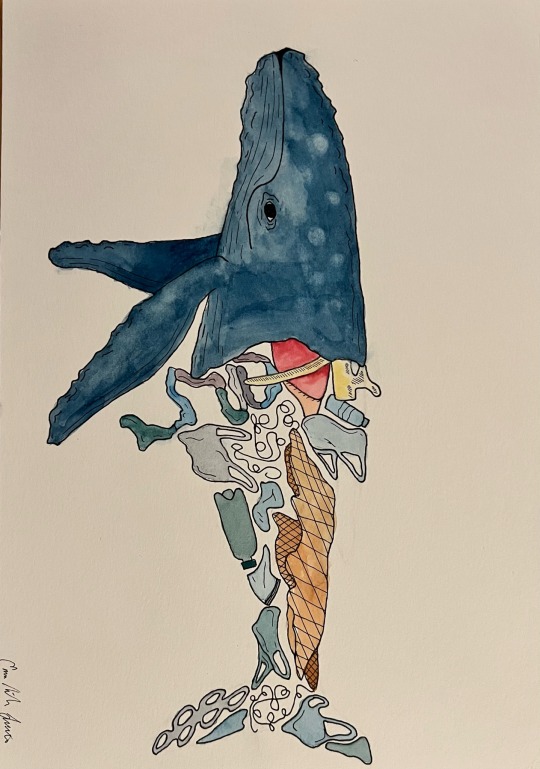
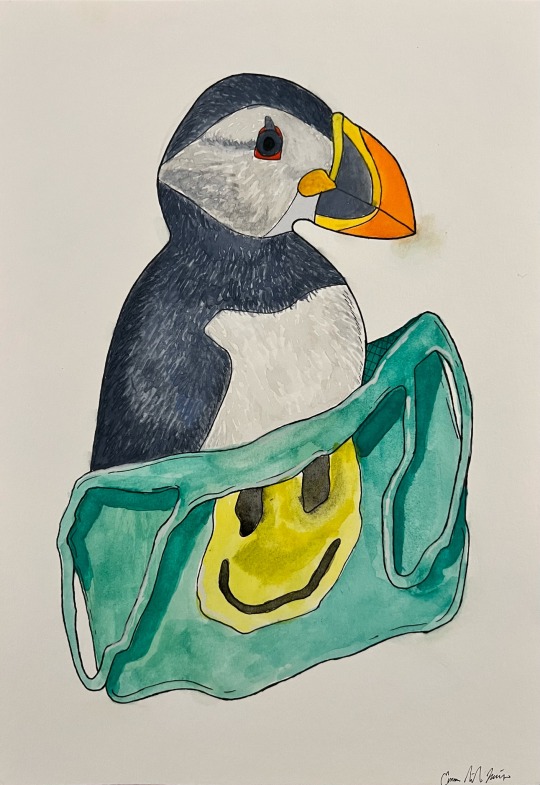

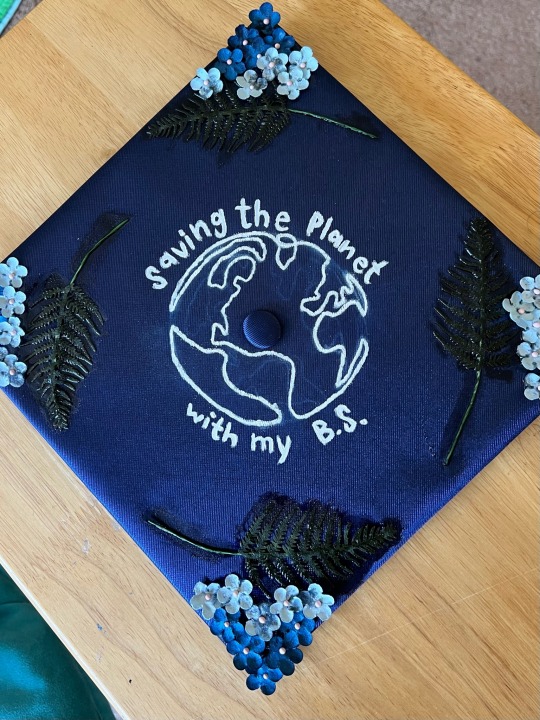
Not Star Wars, but I found these in my camera roll n I figured someone might like them :-))
These were an assignment for an environmental communications class I took, I had to create a form of visual communication that required no further explanation - and I only had 60 mins to produce 3 products
This was part of an exam to see how adaptable we could be when it came to communicating environmental issues with little to no preparation
I just think back to this class often, n I wanna remake these pieces but with more time to give them the Justice they deserve
Feat my graduation cap :)) (BS in environmental sciences and ecology, currently working on a degree in ornithology and wildlife conservation)
#watercolor#wildlife ecology#enviroment art#environmental science#pollution#environmental issues#painting#conservation#communication#tbh as a visual learner this would help me a lot#I’m hoping that the finished pieces I make I can do something with#so if you have any ideas#pls let me know#my art :)#college things
3 notes
·
View notes
Text
I'm starting my new degree in spring (wildlife/fisheries conservation science)
I'm also starting volleyball then, too (libero!!)
And I'm shooting for my first endurance ride with Firefly soon (10 miles intro ride!!)
And I think I'm starting to write my new book of poetry (themed after connection/love of humans)
It's all this new and amazing stuff and I'm probably going to dump about it all over this blog~ 🩷✨
2024 looking to be full and fun!
#dark academia#equestrian#volleyball#wildlife tech#endurance ride#gaited horse#poets#poetry#college#libero#university#wildlife ecology
1 note
·
View note
Text
Associationism
I was today years old when I learned that Pavlov is supposed to be psychology-adjacent, not ecology-adjacent.
See, in wildlife ecology, my class discussed cues a lot. A cue is something an animal uses to determine good habitat from bad habitat. Sometimes the link is obvious, and sometimes it seems entirely random. Oftentimes, cues can be actively harmful: snakes associate warm stone with good habitat, and therefore flock to roads where they’re crushed by cars. Pavlov’s experiment, connecting the idea of food to a completely unrelated stimulus, seems like it fits right in with the discussion of how ecosystems grow and change over time.
Then it turns out that he was thinking about humans. How boring.
#Associationism is the idea in psychology that complex mental processes are made of links between individual ideas#or something#I am not a psychologist#anyways#wildlife ecology#ecology#pavlov#my writing#library of babel#unedited
0 notes
Video
youtube
Roaring Intrusion: Tiger Invades Pilibhit Home! Unbelievable Nighttime S...
#youtube#tigris snow#tiger eye#wildlife education#wildlife encounter#wildlife watching#wildlife exploration#wildlife ecology#pilibhit#tiger#tiger reserve#big cats#big cartel#animals#animals encounter#tigers#nature#forest#jungle
0 notes
Text
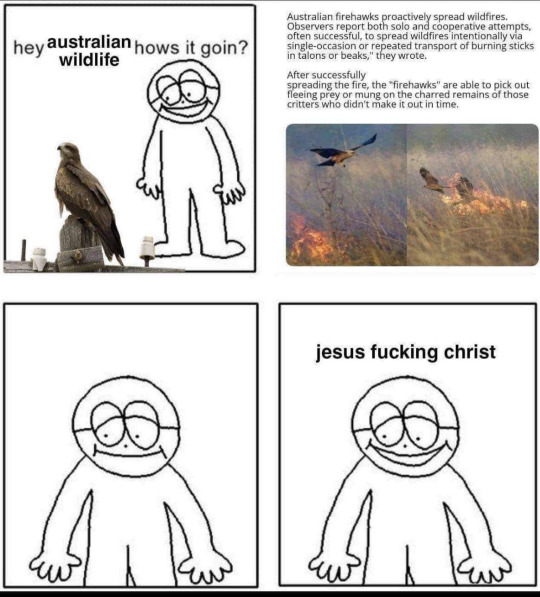
#green memes for ecological fiends#zoology#ecology#bird#hawks#environmental science#biodiversity#conservation biology#conservation#wildlife
28K notes
·
View notes
Text
Hey. You.
Check out this weird fish.

Cool, huh? It's got no bones and it's older than T rex. Wanna learn more? Check out Consider Nature:
#animals#science#biology#nature#conservation#wildlife#environment#fish#fishing#ecology#considernature
5K notes
·
View notes
Text

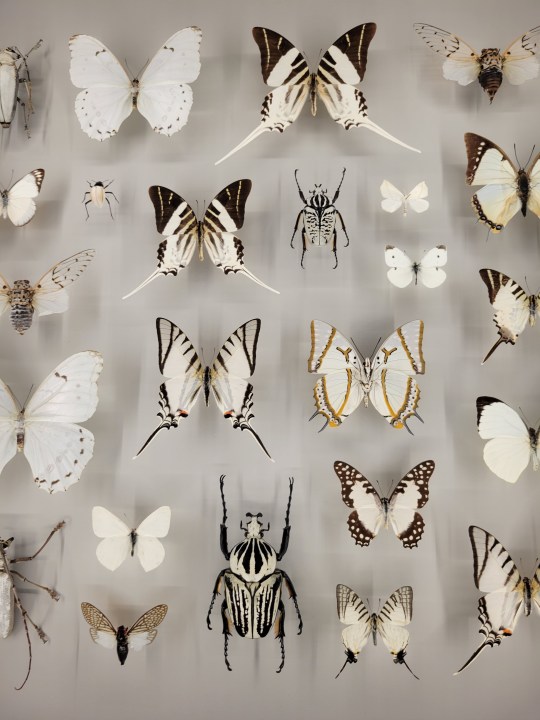
Insects that have a primary color of white, from the Montreal Insectarium
3K notes
·
View notes
Text
"When considering the great victories of America’s conservationists, we tend to think of the sights and landscapes emblematic of the West, but there’s also a rich history of acknowledging the value of the wetlands of America’s south.
These include such vibrant ecosystems as the Everglades, the Great Dismal Swamp, the floodplains of the Congaree River, and “America’s Amazon” also known as the “Land Between the Rivers”—recently preserved forever thanks to generous donors and work by the Nature Conservancy (TNC).
With what the TNC described as an “unprecedented gift,” 8,000 acres of pristine wetlands where the Alabama and Tombigbee Rivers join, known as the Mobile Delta, were purchased for the purpose of conservation for $15 million. The owners chose to sell to TNC rather than to the timber industry which planned to log in the location.
“This is one of the most important conservation victories that we’ve ever been a part of,” said Mitch Reid, state director for The Nature Conservancy in Alabama.
The area is filled with oxbow lakes, creeks, and swamps alongside the rivers, and they’re home to so many species that it ranks as one of the most biodiverse ecosystems on Earth, such that Reid often jokes that while it has rightfully earned the moniker “America’s Amazon” the Amazon should seriously consider using the moniker “South America’s Mobile.”
“This tract represents the largest remaining block of land that we can protect in the Mobile-Tensaw Delta. First and foremost, TNC is doing this work for our fellow Alabamians who rightly pride themselves on their relationship with the outdoors,” said Reid, who told Advance Local that it can connect with other protected lands to the north, in an area called the Red Hills.
“Conservation lands in the Delta positions it as an anchor in a corridor of protected lands stretching from the Gulf of Mexico to the Appalachian Mountains and has long been a priority in TNC’s ongoing efforts to establish resilient and connected landscapes across the region.”
At the moment, no management plan has been sketched out, but TNC believes it must allow the public to use it for recreation as much as possible.
The money for the purchase was provided by a government grant and a generous, anonymous donor, along with $5.2 million from the Holdfast Collective—the conservation funding body of Patagonia outfitters."
youtube
Video via Mobile Bay National Estuary Program, August 7, 2020
Article via Good News Network, February 14, 2024
#united states#alabama#estuary#wetlands#swamp#river#environment#environmental issues#conservation#video#biodiversity#american south#ecosystems#ecology#conservation news#wildlife conservation#ecosystem#conservation efforts#good news#hope#forest#swampco#re#Youtube
2K notes
·
View notes
Text


Snowy Plover (Anarhynchus nivosus) eating a Pacific Sand Crab (Emerita analoga)
#inaturalist#naturalist#nature#ecology#zoology#biology#birds#bird#birdblr#birding#orinthology#photography#nature photography#wildlife photography#hawks photos#snowy plover#plover#pacific sand crab
2K notes
·
View notes
Note
can you do one about vampire squids ? 🦑

Vampyroteuthis infernalis or Vampire Squid
It's (very dramatic) scientific name means "vampire squid from hell". However, the vampire squid is not actually a squid! It's actually the only animal in the Vampyroteuthidae family! It's separated into its own family because it can't change color or produce ink. Instead, it turns itself "inside out" (as shown above) to deter predators.
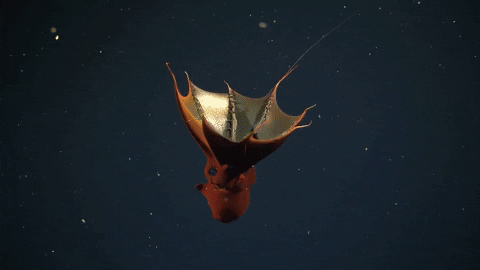
Proportionally, vampire squids also have the largest eyes compared to their body size! They eat mostly zooplankton, marine snow, and other organisms waste. They grow to be about the size of a football and live to be around 8 years old.

There's even evidence that vampire squids have been around since the Jurassic period- almost 200 million years ago!
#marine biology#marine ecology#animals#science#biology#animal facts#wildlife#marine life#ocean#fun facts#vampire squid#cephalopods#sea creature#squid#sea animals#sea creatures#sea animal#cool animals#zoology#ichthyology#sea#seas#oceans#the ocean#deep sea#jurassic period#fun animal facts#weird animal facts
1K notes
·
View notes
Text
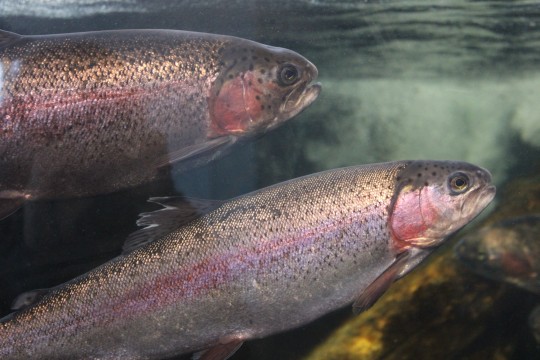
Rainbow trout, Oncorhynchus mykiss, at Monterey Bay aquarium
#fish#rainbow trout#monterey bay aquarium#monterey bay#aquarium#aquariums#nature#wildlife#nature photography#naturalist#mine#photography#ecology#north america#animals#wildlife biology#ichthyology#biology#wildlife biologist#ecologist#biologist#fishes
804 notes
·
View notes
Text

Long-eared owl (Asio otus)
11 March 2023 - Ontario, Canada
#eeeeeee so happy#my photography#observations#mine#birds#owl#birding#todaysbird#long eared owl#birdblr#birdwatching#wildlife photography#animals#species#ecology
500 notes
·
View notes
Text
If you aren't following the news here in the Pacific Northwest, this is a very, very big deal. Our native salmon numbers have been plummeting over the past century and change. First it was due to overfishing by commercial canneries, then the dams went in and slowed the rivers down and blocked the salmons' migratory paths. More recently climate change is warming the water even more than the slower river flows have, and salmon can easily die of overheating in temperatures we would consider comfortable.
Removing the dams will allow the Klamath River and its tributaries to return to their natural states, making them more hospitable to salmon and other native wildlife (the reservoirs created by the dams were full of non-native fish stocked there over the years.) Not only will this help the salmon thrive, but it makes the entire ecosystem in the region more resilient. The nutrients that salmon bring back from their years in the ocean, stored within their flesh and bones, works its way through the surrounding forest and can be traced in plants several miles from the river.
This is also a victory for the Yurok, Karuk, and other indigenous people who have relied on the Klamath for many generations. The salmon aren't just a crucial source of food, but also deeply ingrained in indigenous cultures. It's a small step toward righting one of the many wrongs that indigenous people in the Americas have suffered for centuries.
#salmon#dam removal#fish#animals#wildlife#dams#Klamath River#Klamath dams#restoration ecology#indigenous rights#Yurok Tribe#Karuk Tribe#nature#ecology#environment#conservation#PNW#Pacific Northwest
13K notes
·
View notes
Text
Increasing the diversity of native plants in a single urban green space resulted in a sevenfold increase in the number of insect species after three years, Australian researchers have found.
According to the study’s authors, there had previously been “little empirical evidence of how specific greening actions may mitigate the detrimental effects of urbanisation”.
[...]
Researchers measured baseline insect numbers the year before greening began, when 12 indigenous plant species were introduced to the space, and subsequently conducted insect surveys for the following three years.
They identified 94 insect species in total, 91 indigenous to the Australian state of Victoria. The researchers estimated that by the final year of the study there were about 7.3 times more insect species than originally present, even though only nine plant species remained.
The team also found substantial increases in the number of predator and parasitoid insect species, which help to regulate populations of pest insects.
“These are two key groups that provide a really good ecological signal that the trophic network and all the proper interactions are happening at the site,” Mata said.
2K notes
·
View notes
Text

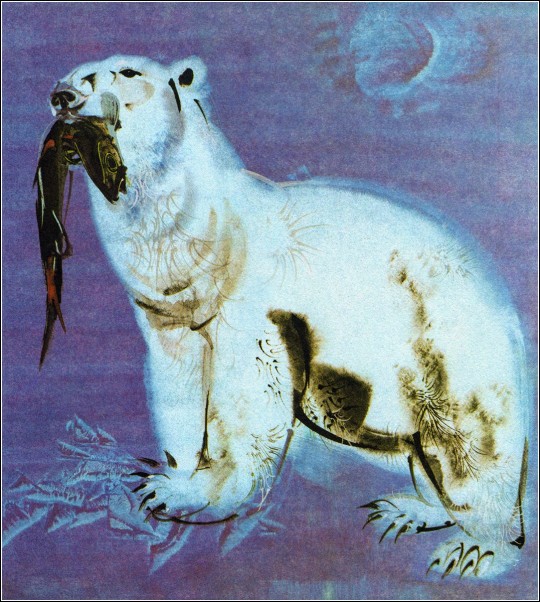

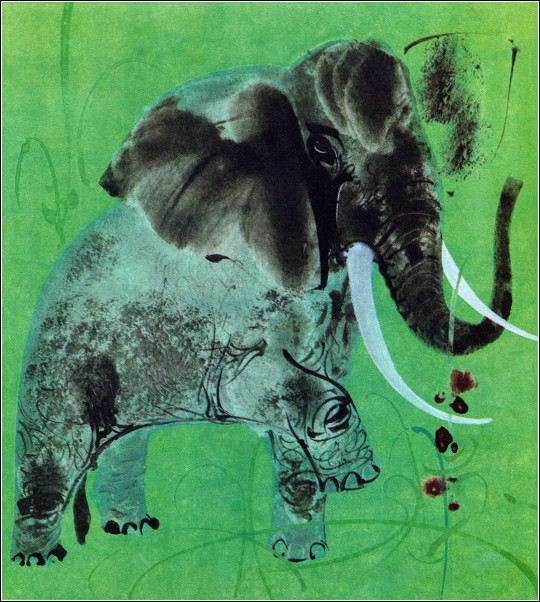

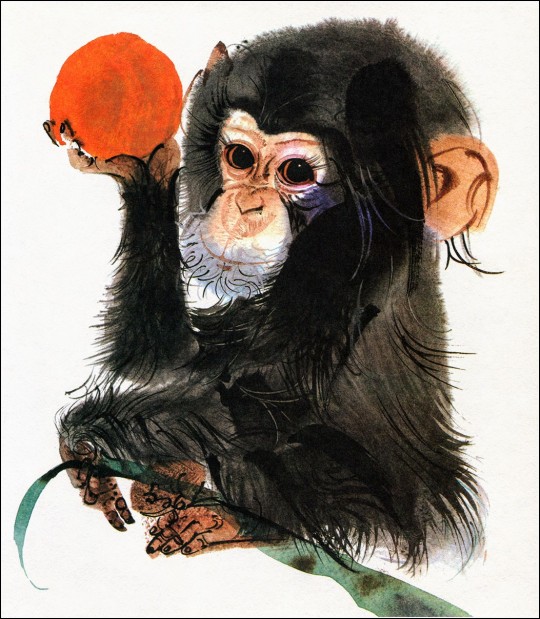




Mirko Hanák (1921-1971) Watercolor paintings on rice paper, 1966.
#mirko hanák#retro#1960s#art#animals#nature#furry#wildlife#vintage#60s#zoo#watercolor#light academia#culture#zoology#ecology#earth#conservation#science#naturecore#🌱
554 notes
·
View notes